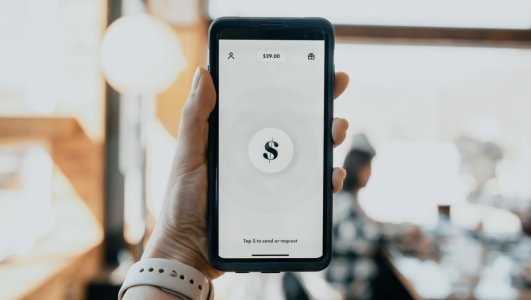This new proposal gives Americans a voluntary way to chip in on the nation’s growing tab
- Replies 0
With growing financial concerns at the national level, officials have started exploring unconventional ideas.
A familiar agency has quietly updated its systems to accept newer forms of contributions.
The process now includes a way for ordinary Americans to take part—no complex forms required.
Whether many will opt in remains uncertain, but the feature is now available for anyone willing to try.
US Treasury is now accepting Venmo and PayPal to help pay off the national debt. The Department of the Treasury has quietly expanded how citizens can donate money to reduce the national debt.
Americans can now use Venmo and PayPal to contribute directly to the government’s Gift to Reduce the Public Debt program.
The program has technically been in place since 1996, allowing anyone to voluntarily send money through more traditional means like credit cards or direct account transfers.

But in a recent update on social media spotted by NPR’s Jack Corbett, the Treasury website now allows these peer-to-peer payment methods as options too.
The new tools aim to make it easier for younger Americans—especially those from Gen Z—to contribute if they wish.
Rather than attaching card or bank details, users can send funds using the same payment apps they already use for friends or small businesses.
Also read: Are rebate checks making a comeback? President Trump signals support for new payouts
The Treasury burned through $286 billion in March alone—the largest single-month drawdown in US history.
Previously, the highest monthly burn occurred during August 2021, at the peak of the pandemic, when $279 billion was spent.
Despite bringing in about $5 trillion in revenue in the 2024 fiscal year, the federal government spent almost $7 trillion.
The difference between what the country earns and what it spends continues to grow each year.
The recently passed Big Beautiful Bill—a top priority for President Donald Trump—will add an estimated $3.4 trillion to the debt over the next decade.
This is on top of the already ballooning debt that has been increasing every year since 2001, when the total was around $10.3 trillion.
Though donations may seem small in the big picture, the government has collected $67.3 million through the program since its creation.
Also read: A new proposal could bring $1,000 rebate checks to millions of homeowners
Still, this amount would last less than 30 minutes at the current spending pace.
While it may sound unlikely that Americans would willingly send extra money to the Treasury, the option has been quietly available for nearly 30 years.
The new Venmo and PayPal options are part of a push to modernize how the Treasury interacts with the public.
Read next: Potential windfall of $5,000 on the horizon? Here’s what to know.

Would you ever consider using a payment app to donate to the government? Do you think this new option will make a difference? Drop your thoughts in the comments!
A familiar agency has quietly updated its systems to accept newer forms of contributions.
The process now includes a way for ordinary Americans to take part—no complex forms required.
Whether many will opt in remains uncertain, but the feature is now available for anyone willing to try.
US Treasury is now accepting Venmo and PayPal to help pay off the national debt. The Department of the Treasury has quietly expanded how citizens can donate money to reduce the national debt.
Americans can now use Venmo and PayPal to contribute directly to the government’s Gift to Reduce the Public Debt program.
The program has technically been in place since 1996, allowing anyone to voluntarily send money through more traditional means like credit cards or direct account transfers.

Americans can chip in on the nation’s growing tab through Venmo and PayPal. Image Source: Tech Daily / Unsplash
But in a recent update on social media spotted by NPR’s Jack Corbett, the Treasury website now allows these peer-to-peer payment methods as options too.
The new tools aim to make it easier for younger Americans—especially those from Gen Z—to contribute if they wish.
Rather than attaching card or bank details, users can send funds using the same payment apps they already use for friends or small businesses.
Also read: Are rebate checks making a comeback? President Trump signals support for new payouts
National debt reaches record levels as spending outpaces revenue
The offer comes at a time when the national debt sits at $36.7 trillion, with projections inching closer to $38 trillion. On just one day last week, the debt jumped by $34.5 billion.The Treasury burned through $286 billion in March alone—the largest single-month drawdown in US history.
Previously, the highest monthly burn occurred during August 2021, at the peak of the pandemic, when $279 billion was spent.
Despite bringing in about $5 trillion in revenue in the 2024 fiscal year, the federal government spent almost $7 trillion.
The difference between what the country earns and what it spends continues to grow each year.
The recently passed Big Beautiful Bill—a top priority for President Donald Trump—will add an estimated $3.4 trillion to the debt over the next decade.
This is on top of the already ballooning debt that has been increasing every year since 2001, when the total was around $10.3 trillion.
Though donations may seem small in the big picture, the government has collected $67.3 million through the program since its creation.
Also read: A new proposal could bring $1,000 rebate checks to millions of homeowners
Still, this amount would last less than 30 minutes at the current spending pace.
While it may sound unlikely that Americans would willingly send extra money to the Treasury, the option has been quietly available for nearly 30 years.
The new Venmo and PayPal options are part of a push to modernize how the Treasury interacts with the public.
Read next: Potential windfall of $5,000 on the horizon? Here’s what to know.
Key Takeaways
- The Department of the Treasury now accepts Venmo and PayPal to reduce the national debt.
- The Gift to Reduce the Public Debt program has existed since 1996 but recently expanded payment options.
- The US national debt currently exceeds $36.7 trillion and continues to rise.
- The Treasury has received $67.3 million in voluntary donations since the program began.






